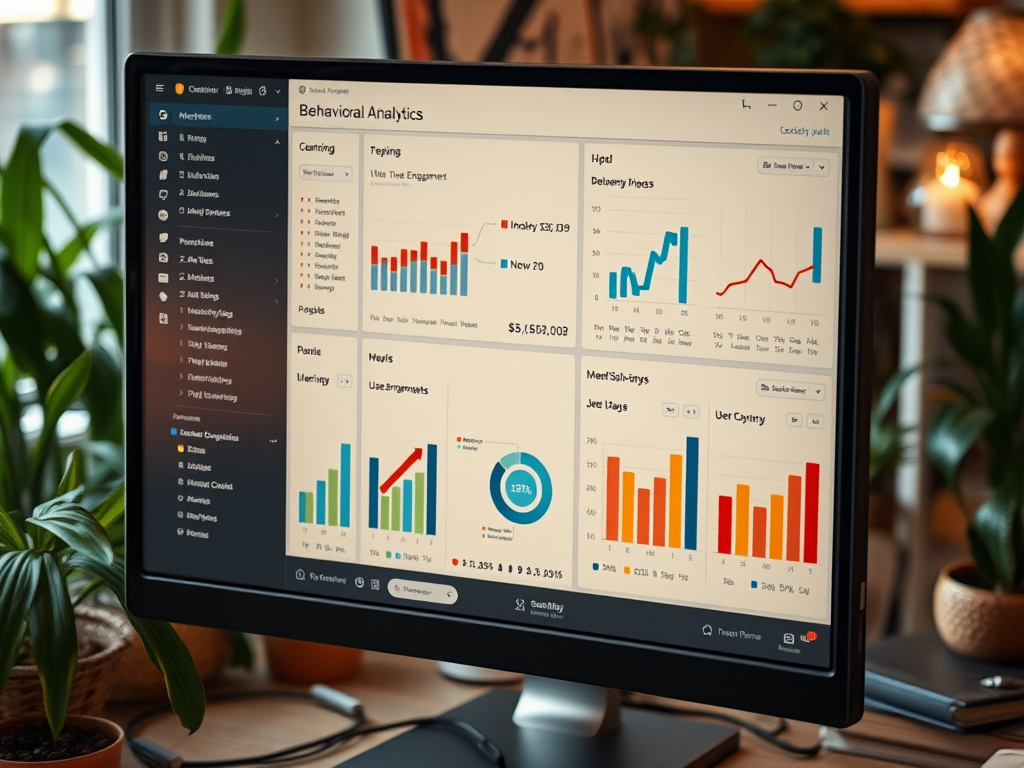In the vast landscape of digital marketing, understanding your audience is more crucial than ever. The success of a website depends significantly on how well it caters to its users. Behavioral analytics emerges as an invaluable tool, offering insights into the nuances of user interactions. By leveraging this powerful analytical approach, businesses can transform the way they engage with their visitors. This article delves into the intricacies of behavioral analytics, illustrating how it can revolutionize your understanding of user behavior on your website. From essential metrics to actionable insights, let’s explore the expansive world of behavioral analytics.
Behavioral analytics is not merely about collecting data; it’s about interpreting it in a way that serves your business goals. By assessing how users navigate through your site, including what attracts their attention and what leads them to disengage, companies can gain a well-rounded perspective on their traffic. Such understanding allows for the creation of targeted strategies that enhance user experience and ultimately drive conversions. With the digital landscape continually evolving, the importance of applying behavioral analytics cannot be overstated. Let’s dive into the importance of grasping user interactions.
Importance of Understanding User Interactions

Understanding user interactions is essential for several reasons:
- Enhanced User Experience: Insights gleaned from user behavior can guide design improvements, making the website more intuitive.
- Informed Decision-Making: Data-driven decisions minimize guesswork, allowing businesses to adapt effectively to user needs.
- Targeted Marketing Strategies: Knowing user interests allows for realistic and targeted marketing campaigns.
- Boost in Conversion Rates: Improved UX leads directly to higher conversion rates, transforming casual visitors into loyal customers.
- Reduced Bounce Rates: Understanding where users drop off enables you to address critical pain points.
Key Metrics in Behavioral Analytics

To glean actionable insights, it’s vital to focus on particular metrics that provide a snapshot of user interactions. Here are some foundational metrics to consider:
- Click-Through Rate (CTR): This metric reveals where users click on your site, providing insights into content effectiveness.
- Bounce Rate: This highlights the percentage of users who leave after viewing only one page, indicating possible usability issues.
- Session Duration: By measuring how long users stay, you can determine if your content keeps them engaged.
The following table summarizes the key metrics relevant to behavioral analytics:
| Metric | Description | Importance |
|---|---|---|
| Click-Through Rate | Percentage of users who click on a specific link | Indicates content engagement |
| Bounce Rate | Proportion of visitors who leave after one page | Highlights potential issues |
| Session Duration | The length of time users spend on your site | Reflects content value and engagement |
Efficient monitoring requires the right tools to gather and analyze data effectively. Here are a few highly recommended platforms:
- Google Analytics: A comprehensive tool offering insights into user sessions, traffic sources, and audience demographics.
- Hotjar: Provides heatmaps and session recordings, allowing businesses to visualize user interactions.
- Mixpanel: Focuses on tracking specific user actions and event-based analysis, offering a deep dive into user journeys.
Analyzing the Data
Once data is accumulated, the next step is analyzing it diligently. Identifying patterns within user behavior is crucial for effective decision-making. By recognizing trends, businesses can pinpoint potential adjustments in their website design or content strategy. Another aspect of analysis involves segmenting data to create distinct user profiles based on behaviors, preferences, and demographics. This approach facilitates targeted marketing, catering to the needs of various audience segments. Moreover, implementing A/B testing based on insights can significantly improve user engagement and satisfaction by refining site elements that enhance conversions.
Implementing Changes Based on Insights
The crux of using behavioral analytics lies in translating insights into actions. Here’s how organizations can leverage their findings:
- Website Optimization: Adjust navigation, design elements, and call-to-action placements to enhance usability.
- Content Strategy: Tailor content or create new materials based on user engagement metrics, ensuring ongoing relevancy.
- Feedback Loops: Incorporate avenues for users to provide feedback, such as surveys or comment sections, which deepen your understanding of user needs.
Итог
Behavioral analytics equips businesses with a nuanced understanding of user interactions on their websites. This capability leads to a more user-centric approach, fostering improved engagement and satisfaction. Ultimately, a well-functioning website not only attracts visitors but transforms them into loyal customers. In an age where personalization is crucial, leveraging insights from behavioral analytics will remain vital for a company’s growth. By fostering an ongoing dialogue with your audience through these analytical insights, you’re more likely to meet and exceed their expectations.
Часто задаваемые вопросы
- What is behavioral analytics? Behavioral analytics is the analysis of user data regarding interactions with a website, which helps organizations optimize user experience and inform strategic decisions.
- Why is understanding user interactions important? It provides insights into user behavior, preferences, and pain points, allowing for improved website design and marketing strategies.
- What metrics should I focus on in behavioral analytics? Key metrics include click-through rates, bounce rates, and session duration, as they reveal essential aspects of user engagement.
- Which tools are best for monitoring user behavior? Google Analytics, Hotjar, and Mixpanel are highly recommended for tracking and analyzing user interactions effectively.
- How can I implement changes based on user insights? You can optimize website design, update content strategy, and create feedback loops to adapt based on user behavior insights.
